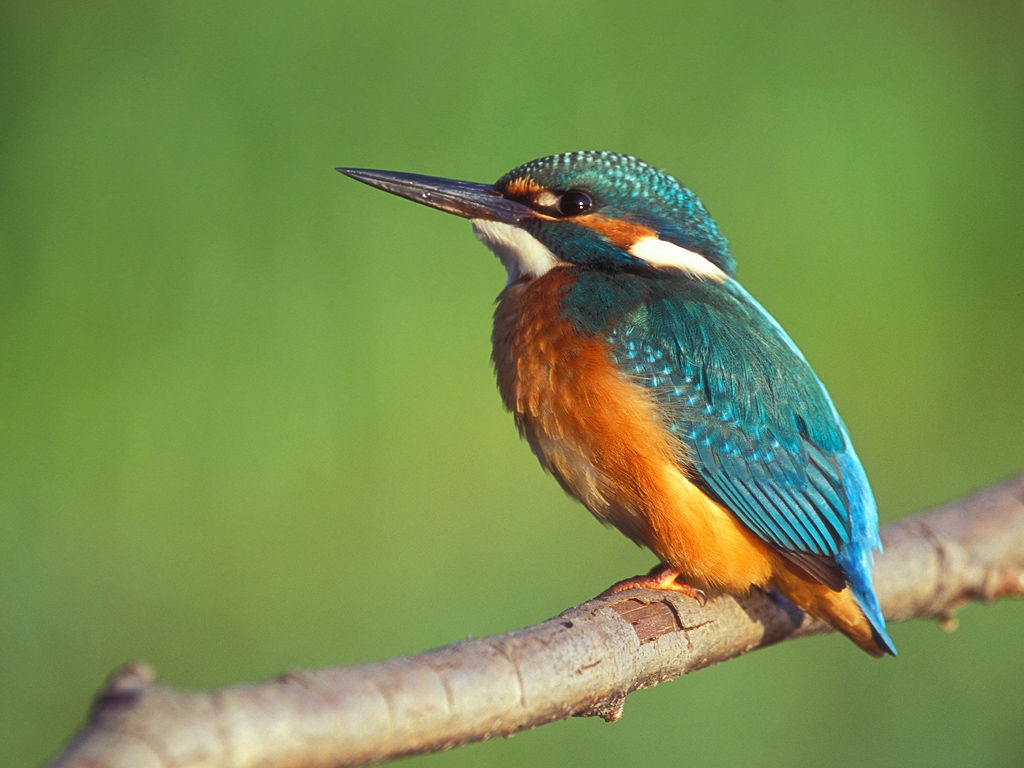| Citation |
BirdLife International 2016. Alcedo atthis . The IUCN Red List of Threatened Species 2016: e.T22683027A89575948. http://dx.doi.org/10.2305/IUCN.UK.2016-3.RLTS.T22683027A89575948.en. Downloaded on 06 January 2020. |
Description |
JUSTIFICATION
This species has an extremely large range, and hence does not approach the thresholds for Vulnerable under the range size criterion (Extent of Occurrence <20,000 km2 combined with a declining or fluctuating range size, habitat extent/quality, or population size and a small number of locations or severe fragmentation). The population trend is not known, but the population is not believed to be decreasing sufficiently rapidly to approach the thresholds under the population trend criterion (>30% decline over ten years or three generations). The population size is very large, and hence does not approach the thresholds for Vulnerable under the population size criterion (<10,000 mature individuals with a continuing decline estimated to be >10% in ten years or three generations, or with a specified population structure). For these reasons the species is evaluated as Least Concern.
DESCRIPTION
The global population is estimated to number < c.600,000 individuals (del Hoyo et al. 2001). The European population is estimated at 97,500-167,000 pairs, which equates to 195,000-334,000 mature individuals (BirdLife International 2015). Europe forms approximately 25% of the global range, so a very preliminary estimate of the global population size is 780,000-1,340,000 mature individuals, although further validation of this estimate is needed. National population estimates include: c.100-100,000 breeding pairs, c.50-10,000 individuals on migration and c.10,000-100,000 breeding pairs in China; c.10,000-100,000 breeding pairs in Taiwan; c.100-10,000 breeding pairs and c.50-1,000 individuals on migration in Korea; c.10,000-100,000 breeding pairs and c.50-1,000 individuals on migration in Japan and c.100-100,000 breeding pairs and c.50-10,000 individuals on migration in Russia (Brazil 2009).
Trend Justification: In Europe and the EU27 the population size is estimated to be decreasing by 30-49% in 13.2 years (three generations) (BirdLife International 2015). The population trend elsewhere is not known.
HABITAT AND ECOLOGY
This species prefers still or gently flowing water with plenty of small fish, and with reeds, rushes or shrubs on the banks for perches. Streams, small rivers, canals and ditches are favoured to open waterbodies, but it also uses lakes, ponds and flooded gravel pits. In winter it becomes more coastal, also using estuaries, harbours and rocky seashores. Egg-laying occurs from March to July in Britain, May in Sweden, March-May in Morocco and Iraq, April-July in Kashmir, March-June in northern and central India, February-September in southern India, November-June in Sri Lanka, March-June in Myanmar, January-February and possibly June in Malaysia, March-August in Japan and in June in Papua New Guinea. Suitable banks for nesting required in breeding season, but nest-sites can be over 250 m from foraging waters and can occur infrequently in walls, rotten tree stumps, concrete tunnels in canal banks, terrestrial termitarium, or in the burrow of Sand Martin (Riparia riparia) or water vole (Arvicola terrestris). Clutch size can be from three to ten eggs but typically six or seven. In Europe, the main prey is fish but will also consume aquatic insects, flies (Diptera), butterflies and moths (Lepidoptera), amphibians (Rana), crayfish (Astacus), prawns (Palaemon), shrimps (Gammarus) and isopods in winter. Very occasionally it feeds on berries (Rubus, Sambucus) and stems of reed (Phragmites). In areas where freezing conditions occur in winter, it regularly migrates south, but generally stays within the speciess breeding range. Southern populations are usually sedentary (Woodall 2016).
THREATS
Hard winters are thought to be a significant threat to this species (Tucker and Heath 1994), particularly northern populations (Woodall 2016). Severe winters in 1961–1962 and 1962–1963 caused the species to be almost entirely extirpated from parts of Europe. Long term declines are thought to be due to chemical and biological river pollution. The two main sources of this are most likely industrial waste disposal and agricultural chemical runoff. Canalization of streams and clearance of emergent vegetation to improve drainage result in loss of nesting and feeding habitat and declines in fish numbers (Tucker and Heath 1994). It is also at risk locally from persecution to protect fish stocks (Woodall 2016).
CONSERVATION ACTIONS
Conservation Actions Underway
Bern Convention Appendix II. EU Birds Directive Annex I. There are no known current conservation measures for this species within its European range.
Conservation Actions Proposed
Preservation of rivers and streams must be mediated through industry, agriculture and water authorities (Tucker and Heath 1994). Research to investigate the importance of individual threats and mitigation measures against these is also important. |


